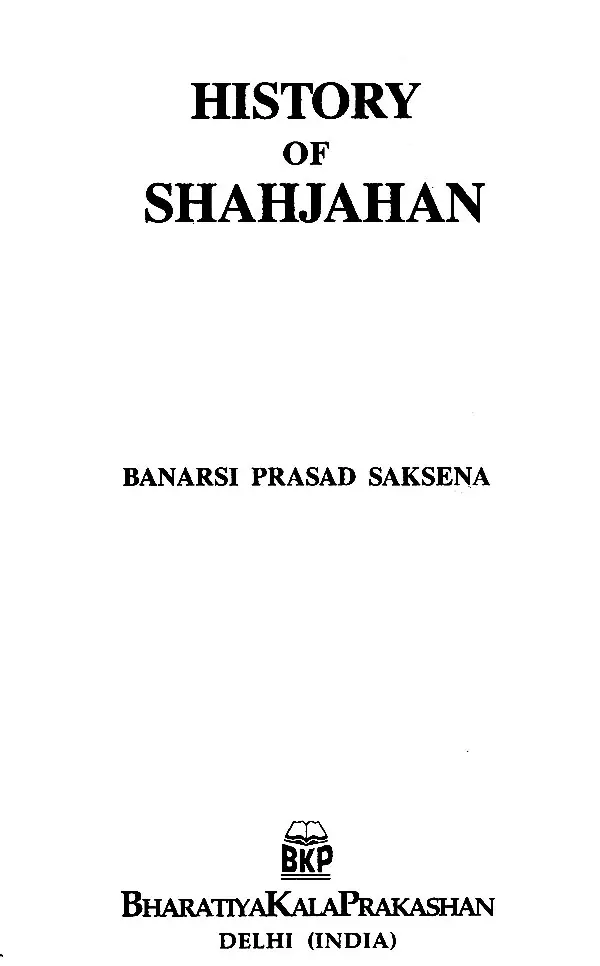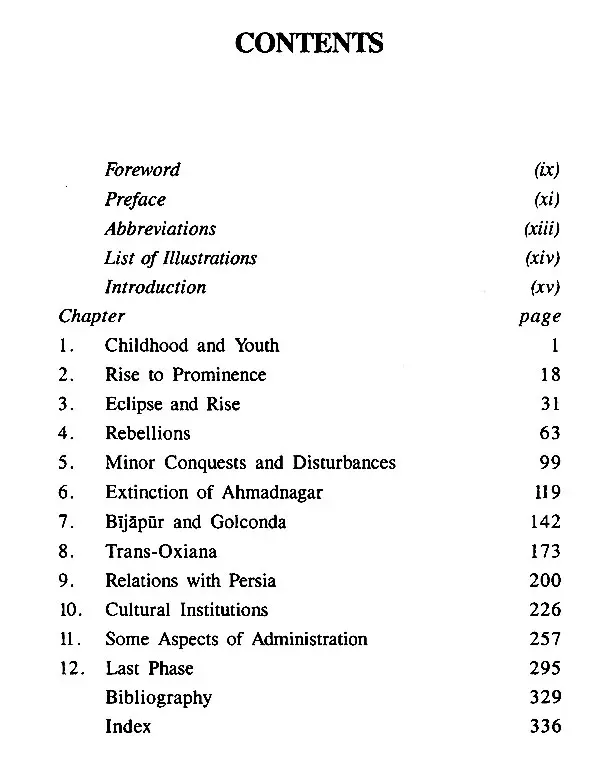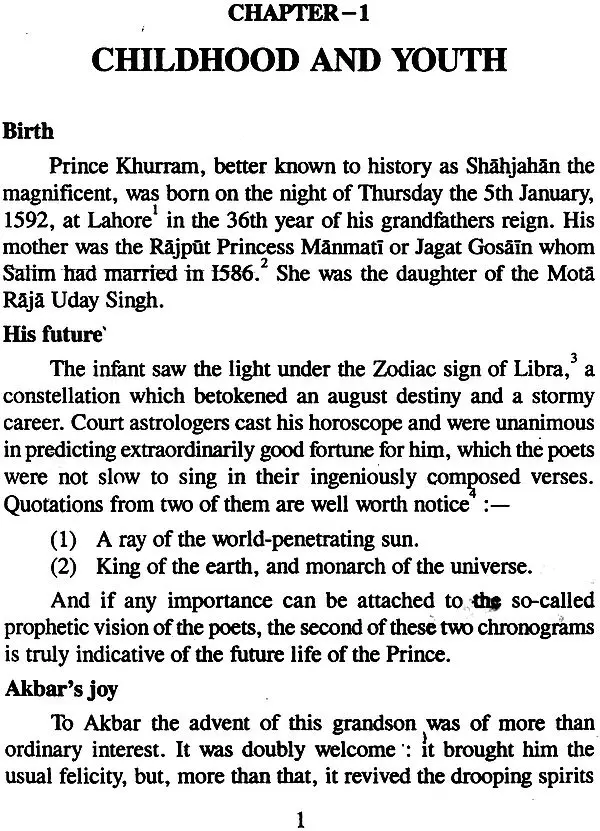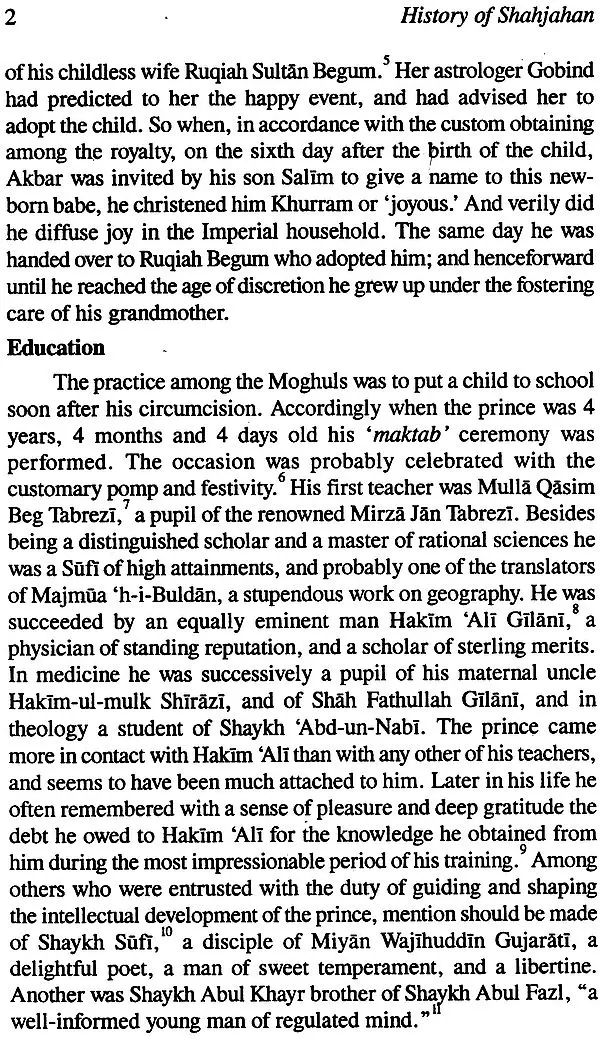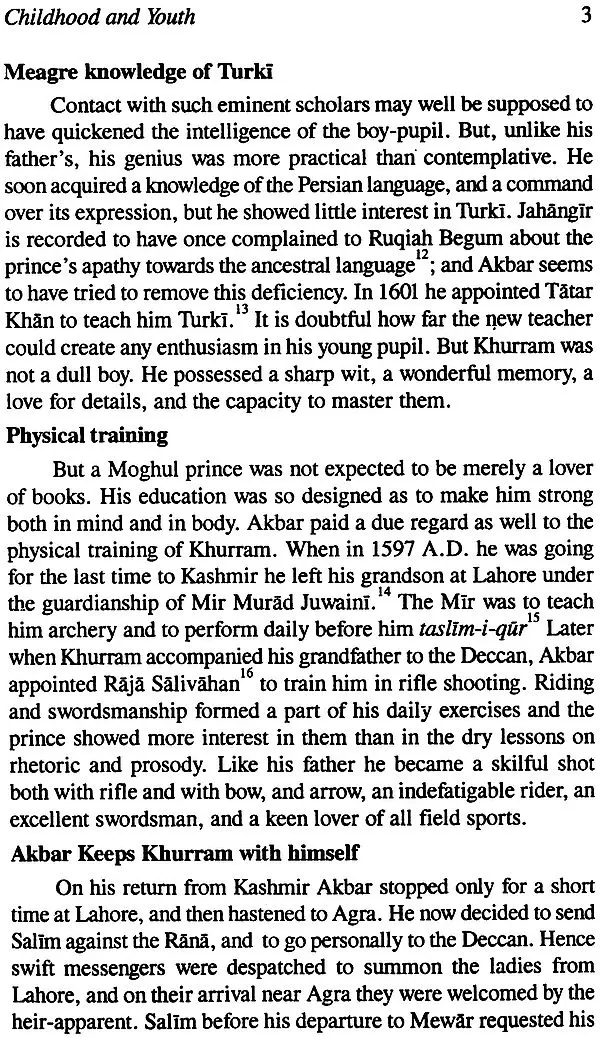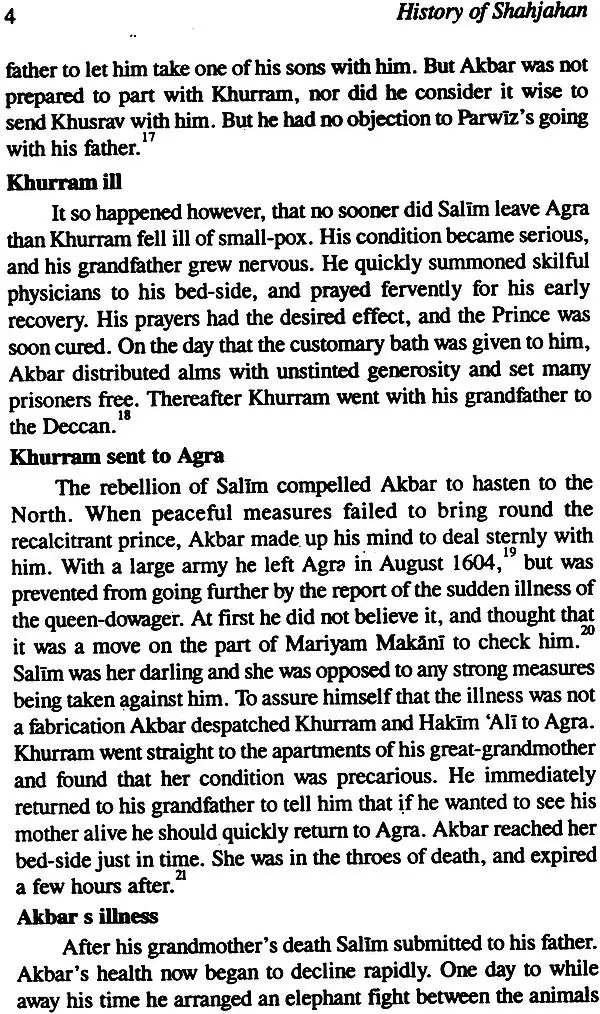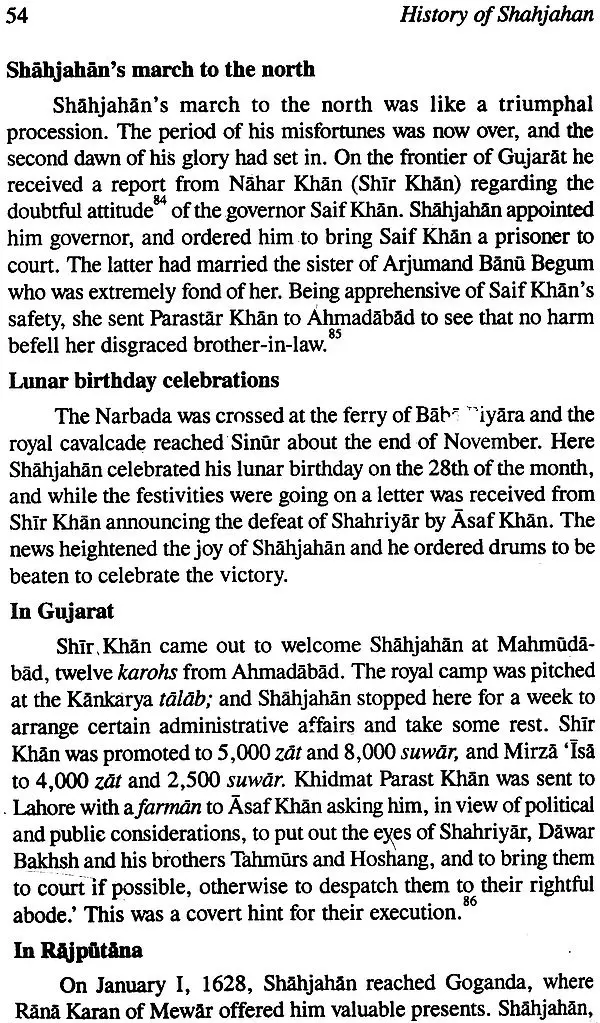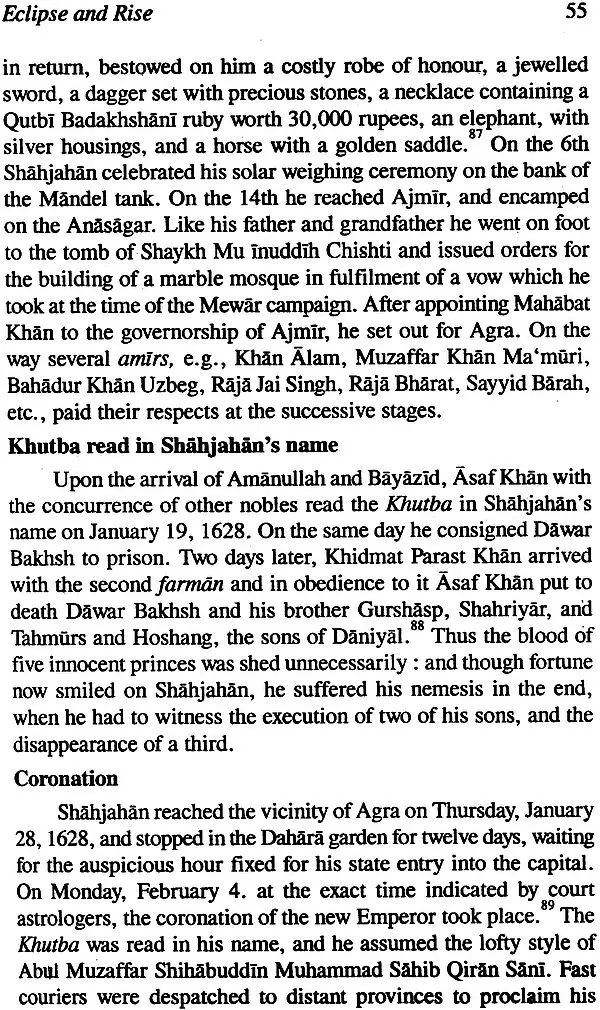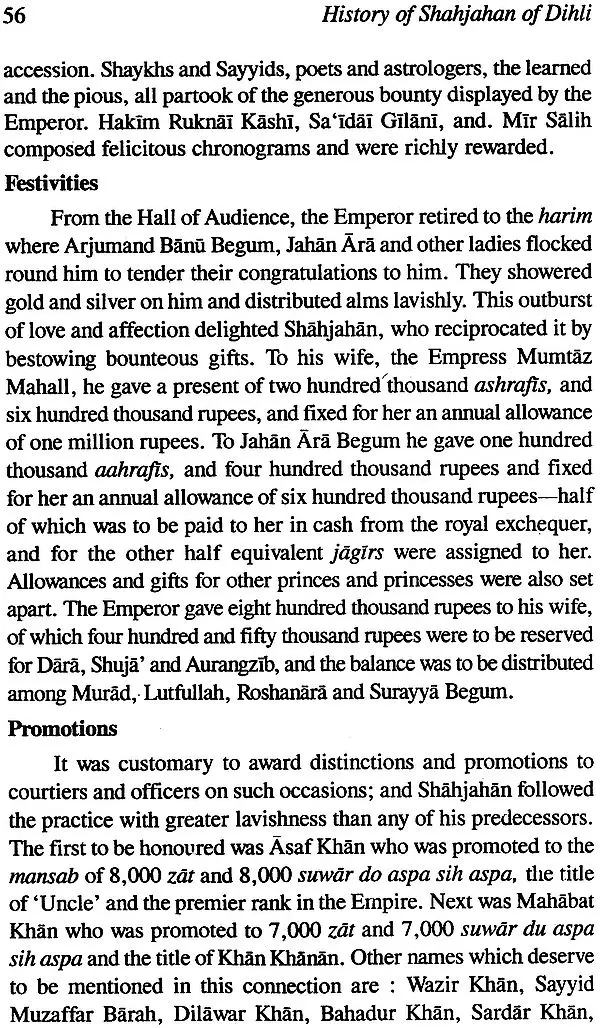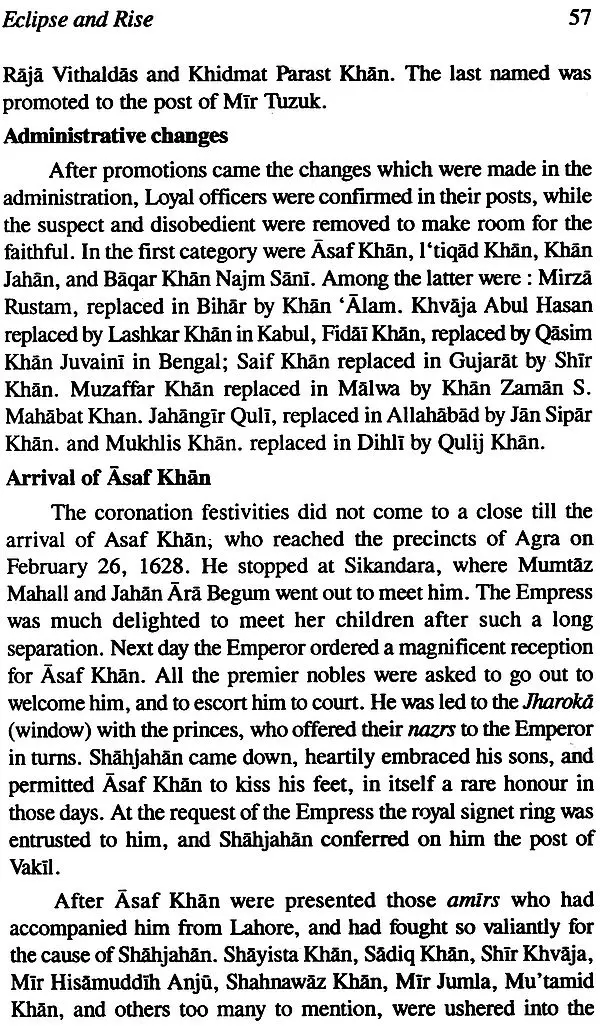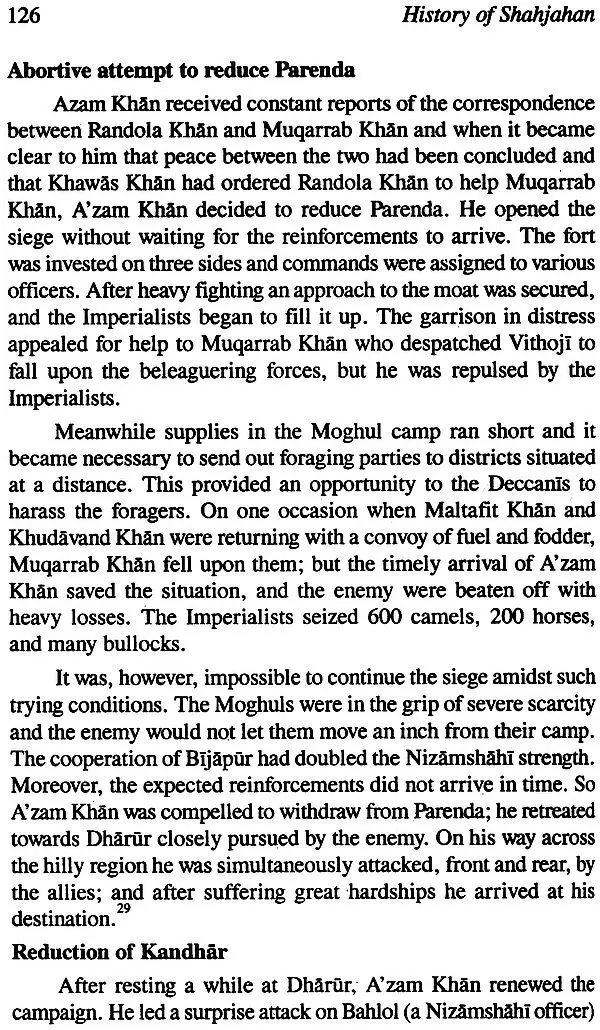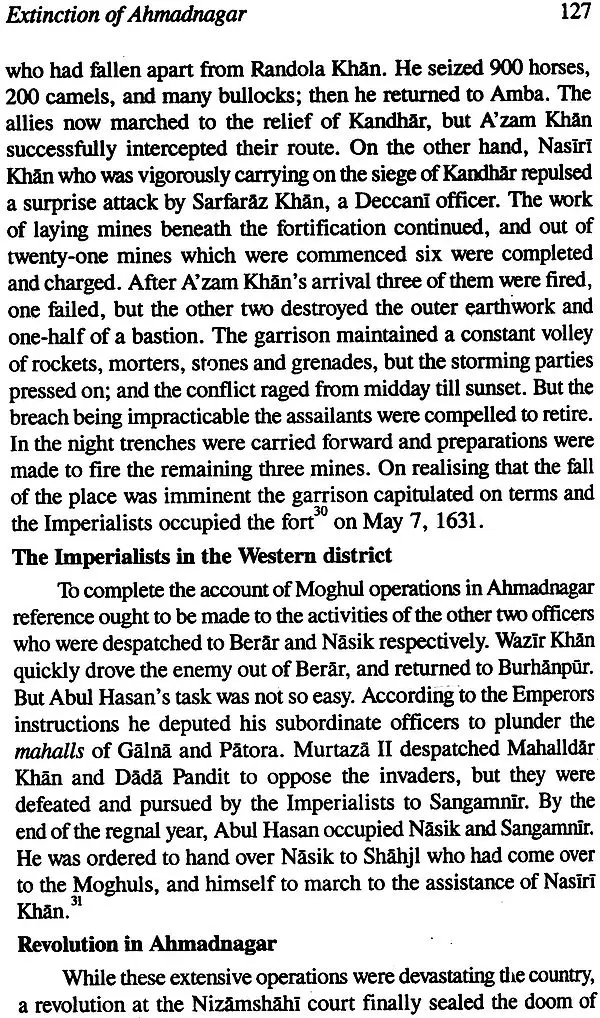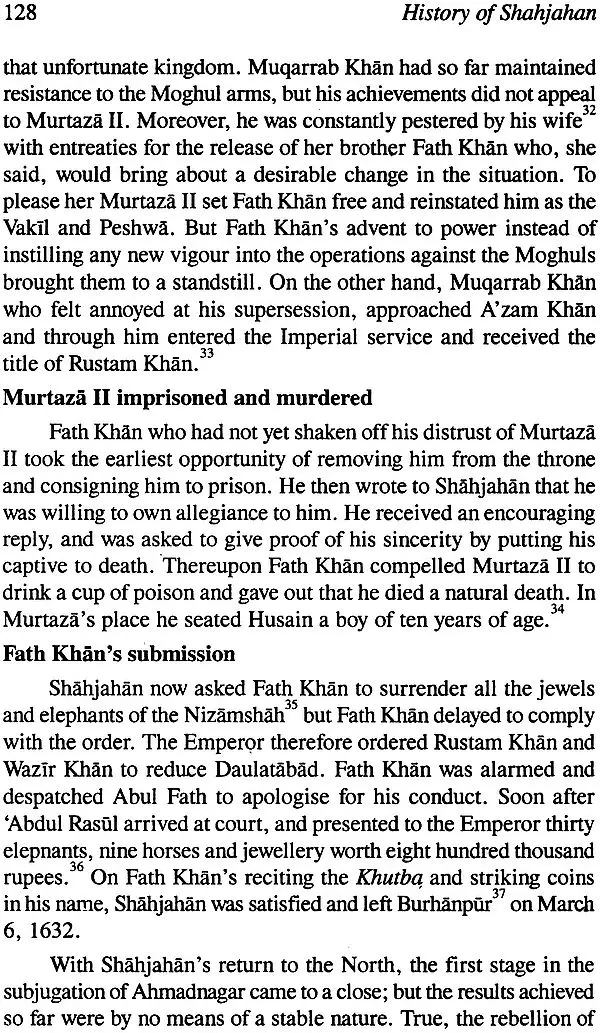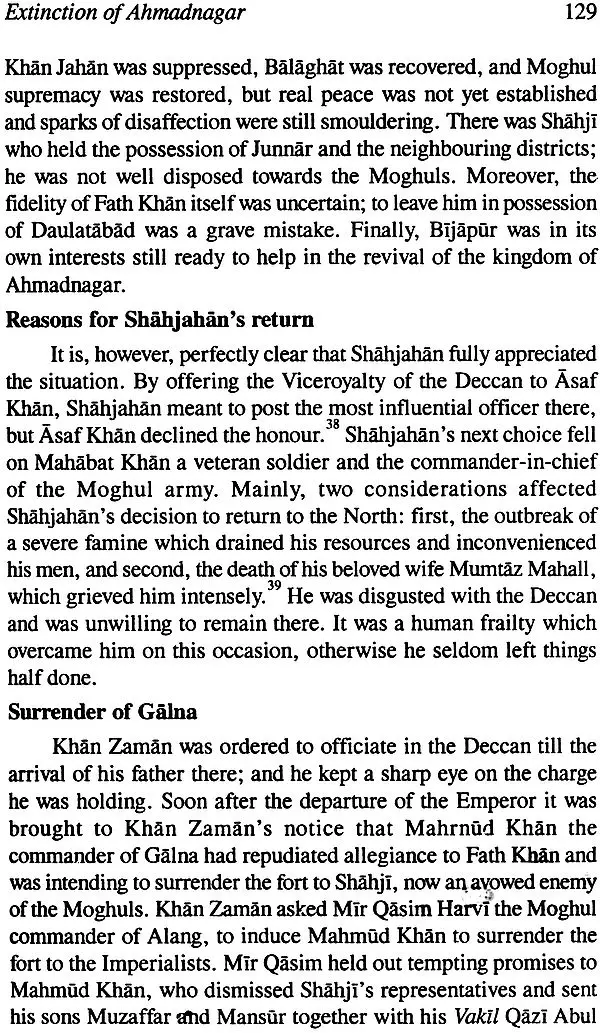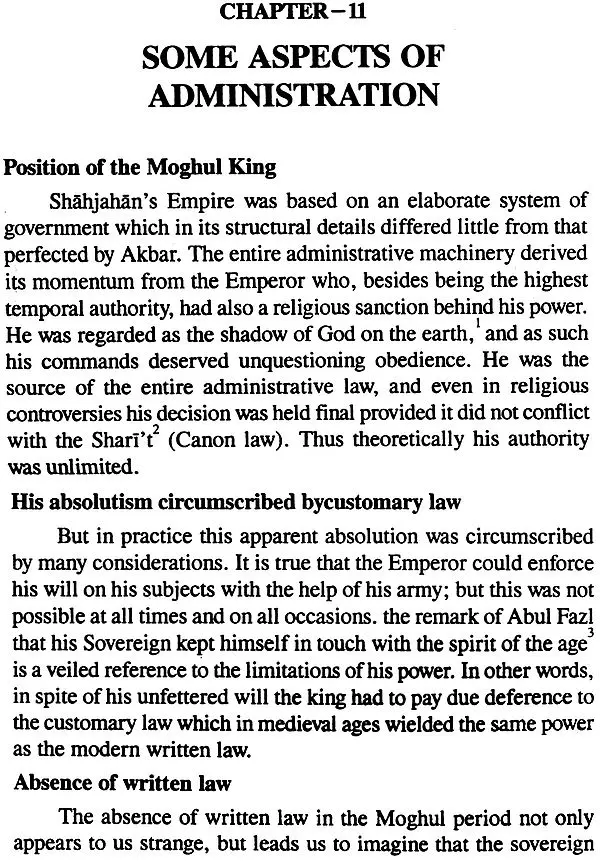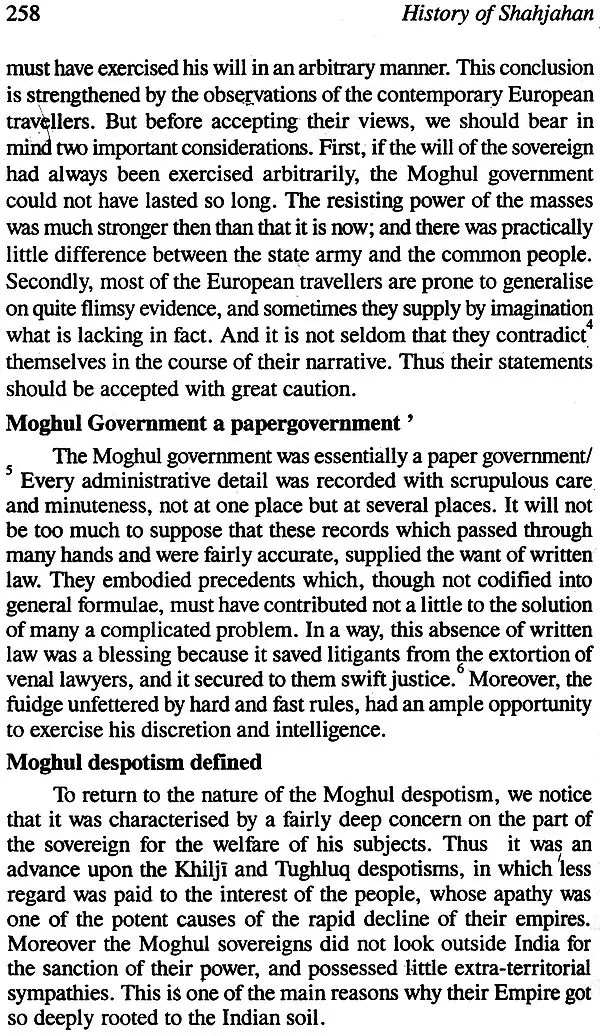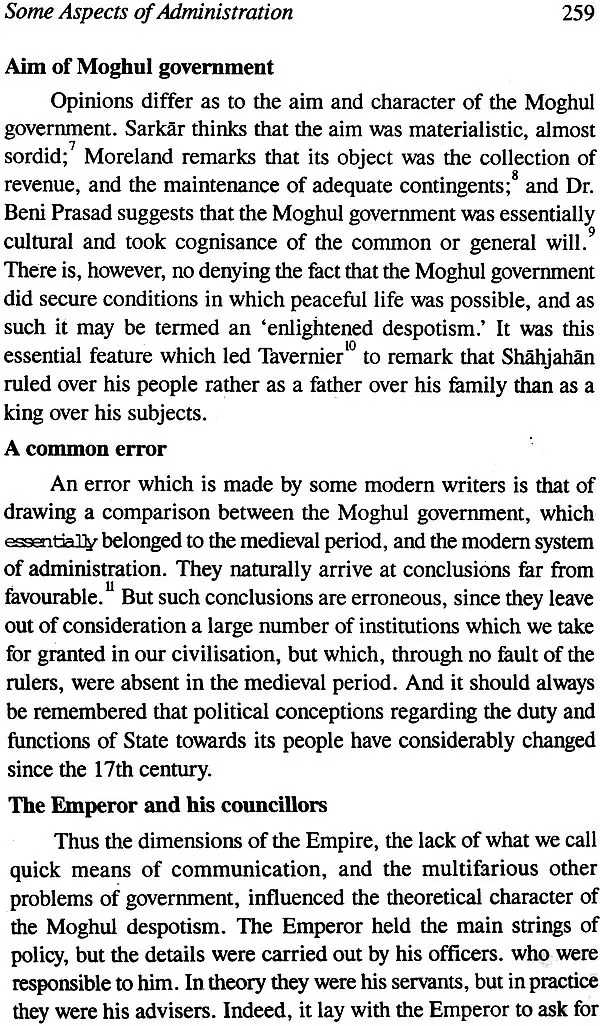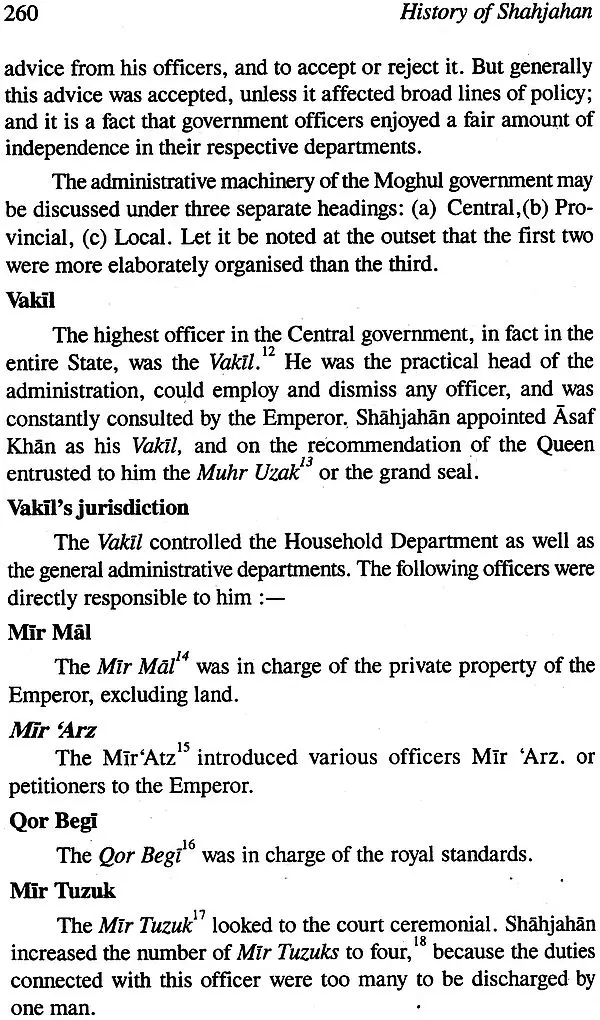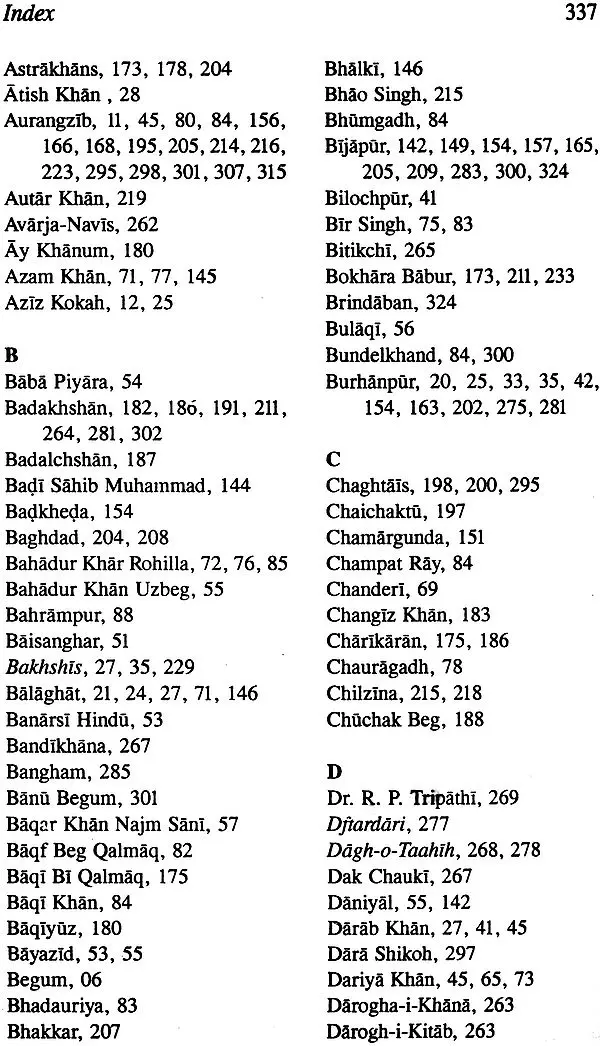
History of Shahjahan
Book Specification
| Item Code: | UAO133 |
| Author: | Banarsi Prasad Saksena |
| Publisher: | Bharatiya Kala Prakashan |
| Language: | English |
| Edition: | 2013 |
| ISBN: | 9788180902376 |
| Pages: | 388 |
| Cover: | HARDCOVER |
| Other Details | 9.00 X 6.00 inch |
| Weight | 610 gm |
Book Description
The aim of this work is to fill a gap in the history of the Chaghtal dynasty. The period covered by it extends from 1592 to 1657. The War of Succession, which followed the serious illness of Shahjahan.
Shahjahan is commonly portrayed as a gross voluptuary, 'cruel, treacher ous, and unscrupulous.' Like other Asiatic rulers of his own and a later age, he had little scruple in removing those, even of his nearest kin, who stood in his path, like them, he was not averse from sensual pleasures, but he was no idler; he had a high ideal of his kingly duties, and there is overwhelming evi dence to prove that he led a strenuous life.'
Dr. Saksena treats his subject with praiseworthy impartiality. Shahjahan, in his hands, is not 'the virtuous sove reign with hardly a blemish on his charac ter depicted by contemporary Indian chroniclers, nor on the other hand, is he the monster of moral depravity described by some European travellers who have flavoured their pages with the scan dalous gossip of the purliens of the court.
Shahjahan's reign was the most glorious epoch in the Medieval period. There was peace and prosperity and an all-round development of art and litera ture. The most gorgeous buildings were erected in this reign, and the most ambi tious military campaigns were under taken. But underneath this glittering array of pomp and magnificence, signs of decline are also noticeable, and the source of a large number of disastrous , tendencies which culminated in a crash after the death of Aurangzib, may with justice be traced to the reign of Shahjahan.
Banarsi Prasad Saksena, M.A., Ph.D., London, Lecturer in History, University of Alllahabad.
To write the history of Shahjahan's reign within the compass of a thesis of a limited volume, meant doing injustice to some of the important topics connected therewith. And I must confess that the chapters on the cultural and administrative institutions could have been more comprehensive; but the exigencies of examination compelled me to reduce them to their present size, notwithstanding the fact that there was no paucity of material on these subjects. I therefore owe a word of apology to the public in general, and to the scholars of the Moghul India in particular, for this drawback in my work, which I hope to rectify in a subsequent edition.
My grateful acknowledgments are due to Lt. Colonel Sir Wolseley Haig without whose guidance I could not have finished this work as smoothly as I could. Let me not omit to mention in this connection the name of Sir E. Denison Ross whose useful suggestions were a welcome addition to my knowledge. I am also greatly indebted to M. Grugeon, Esq. of the Kings College, London for the trouble he took in revising the manuscript of my thesis.
In the end, let me acknowledge with thanks the assistance I received from my pupils Messrs Bhawani Prasad and Shambhu Saran Lal, Hafiz Ahmad Ali Khan, the Librarian of the State Library, Rampur, Miss Murray Browne, the Deputy-Librarian at the School of Oriental Studies, London and Mr. Sarju Prasad, the Deputy-Librarian of the Allahabad University Library.
In his introduction to this work Dr. Saksena rightly describes the reign of Shahjahan as an epoch in itself. It was in this reign that the power and wealth of the Moghul Empire, as it is miscalled, and the splendour of its court reached their zenith and the reign is styled by the author 'the most glorious epoch in the medieval period," though he justly observes that even in this long and splendid reign signs of decline are noticeable. The dominions of the House of Timur had not yet reached their extreme limit, for Shahjahan's successor added two kingdoms to them, but the result of this expansion of the territory directly subject to the Imperial crown proves the superior wisdom of Shahjahan in contenting himself with the submission of these vassal kingdoms and refraining from annexation.
Shahjahan is commonly portrayed as a gross voluptuary, *cruel, treacherous, and unscrupulous.' This is hardly just. Like other Asiatic rulers of his own and a later age, he had little scruple in removing those, even of his nearest kin, who stood in his path, like them, he was not averse from sensual pleasures, but he was no idler; he had a high ideal of his kingly duties, and there is overwhelming evidence to prove that he led a strenuous life.'
Though by blood more than half Hindu, he was a better Muslim than either his father or his grandfather, and abolished practices instituted or sanctioned by them which were opposed to the sacred law of Islam. He never tasted wine until he was twenty-four years old, and then only at the instigation of his father, and he was never a slave to what may be regarded as the curse of his house. Two of his uncles and one of his brothers had died from the abuse of strong drink, and it was only his father's naturally robust constitution which enabled him to withstand for so long the natural results of his habitual excess, but Shahjahan, though he sometimes broke the law of his faith, did not abuse the good gifts of God. Against the sensuality of his later life, exaggerated by European travellers, must be set his devotion to the beloved wife who was the mother of twelve of his fourteen children, his grief for her death, and his desolation when she was no more. These have their memorial in the crowning beauty of Agra.' The palace at Delhi and many other buildings do credit to Shahjahan's taste in architecture, but the Taj, a monument of love, is unsurpassed in the world.
It is strange that the reign of such a monarch should not hitherto have attracted the special attention of any historian writing in English. Babur and his son have been commemorated by the late Mrs. Beveridge, of those who have devoted themselves both in history and fiction, to the memory of Akbar, that prince of dreamers, space forbids a list, Jahangir has not been neglected, and Aurangzib has been exhaustively treated by that fine historian. Sir Jadunath Sarkar, but Shahjahan has not yet been systematically studied, and the notices of his reign in general histories hitherto published leave much to be desired. This thesis,' says its author, 'is an attempt to fill the blank.." I may add that it is a highly successful attempt.
At a time when the study of epochs rather than of personalities is engaging the attention of serious students of history, it seems a little out of place to devote one's energy to the elucidation of the reign of one individual monarch only. But it is different with the reign of Shahjahan. In the first place, his reign like that of his grandfather Akbar is an epoch by itself, and secondly, it has not, so far, been exhaustively dealt with.
Scope of the thesis
Thus the aim of this thesis is to fill a gap in the history of the Chaghtai dynasty. The period covered by it extends from 1592 to 1657. The War of Succession, which followed the serious illness of Shahjahan, is outside the scope of the present work, because it has been very graphically described by Sir Jādū Nath Sarkar in his stupendous work on Aurangzib; and the last years of Shahjahan's life have similarly been excluded for the same reason. The repetition of well-known facts has so far as possible been avoided; but where for the sake of the continuity of the narrative it seemed essential to refer to them, this has been done with great brevity.I have based my studies mainly on the contemporary Persian sources, and, where sufficient evidence was not avail able, on later records as well. I have also utilised the accounts of European travellers, which either exist in English or have been translated into English. This mass of raw material, which has been thoroughly sifted and made to yield results embodied in the thesis, falls into three divisions:
Book's Contents and Sample Pages
